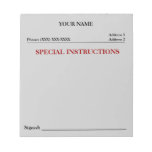But when it comes to putting all this material into some kind of meaningful order, there are some basic considerations to take note of. On the one hand you may be content to compile an informal family scrapbook and associated family tree charts and diagrams, without applying the full science of genealogy.
On the other hand you may wish to be much more formal and thorough and plan to produce a full-blown family chronicle. This will contain the charts and diagrams of the branches of your tree, but will also include well-researched mini biographies of key people on your tree, together with notes of where they lived, and the social conditions of their time. This procedure will provide a much more rounded presentation and stand up to the scrutiny of detail.
To achieve this higher standard and with it also a greater level of satisfaction it will be essential to make a clear distinction between two types of source. There are Primary sources and there are Secondary sources. The most important Primary sources are certificates of Birth, Marriage and Death. Probably the more recently issued certificates will already be in your possession, while the earlier ones may have to be searched and paid for. Then the evidence from the Census returns will often prove invaluable too.
Secondary sources are often a valuable source of information, but in the very nature of things they are less reliable. My Australian uncle was a surgeon captured by the Japanese in China. We have a few of his original letters, which are primary sources, but most of the information about him comes from memories relayed by his daughters in their more recent biographical statements; they were quite young at the time. Their diaries, although close to the events surrounding his capture, internment and eventual release are still secondary sources.
More recently we have witnessed the calamitous impact of the tsunami on the people living on the North East coast of Japan. Anyone who experienced the trauma or witnessed the devastation was a primary source. Even those who witnessed the event on TV, and can express what they felt at the time are considered to be primary sources.
Secondary sources would be accounts written up after the event, TV documentaries, and any articles or books issued later. All these accounts would offer valuable information, often graphically and compellingly presented, but they would still be secondary sources none the less. Historians often have to start with secondary sources, and then dig around for the primary sources behind them. Happy searching!













No comments:
Post a Comment